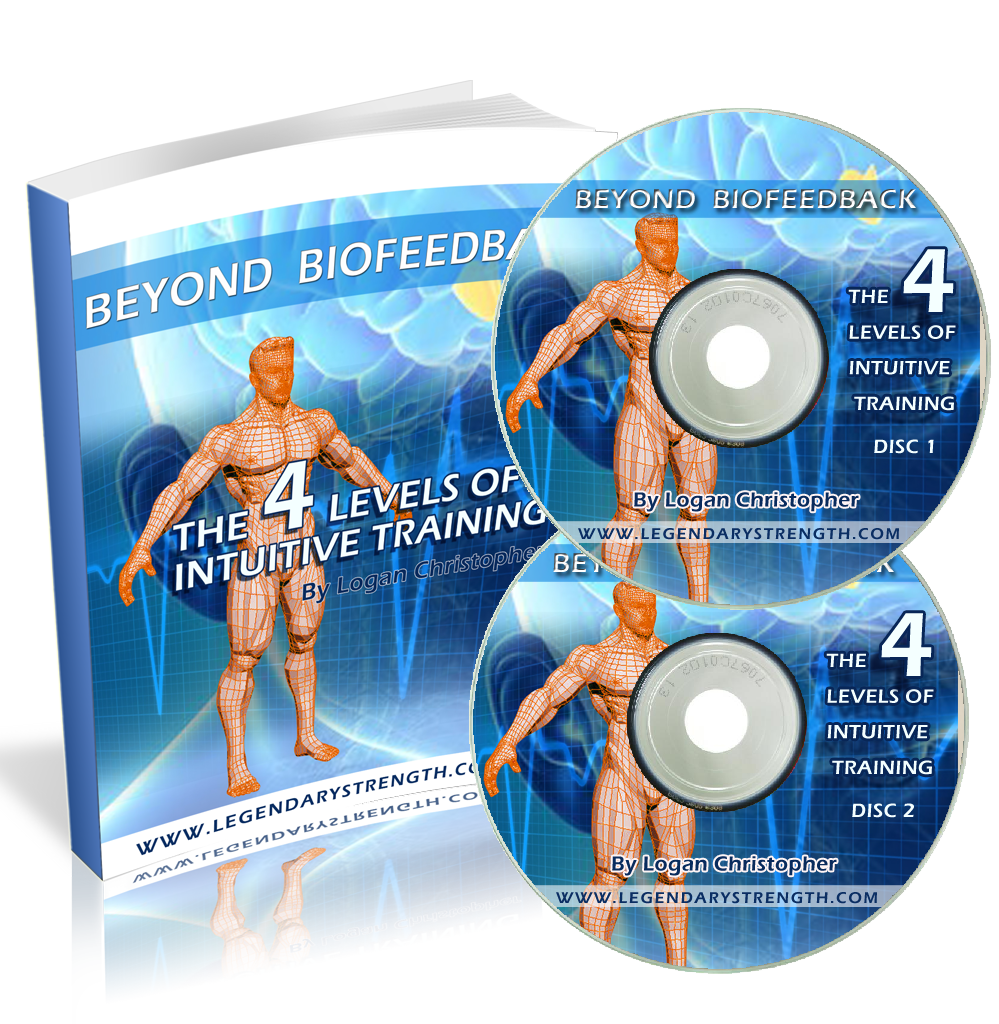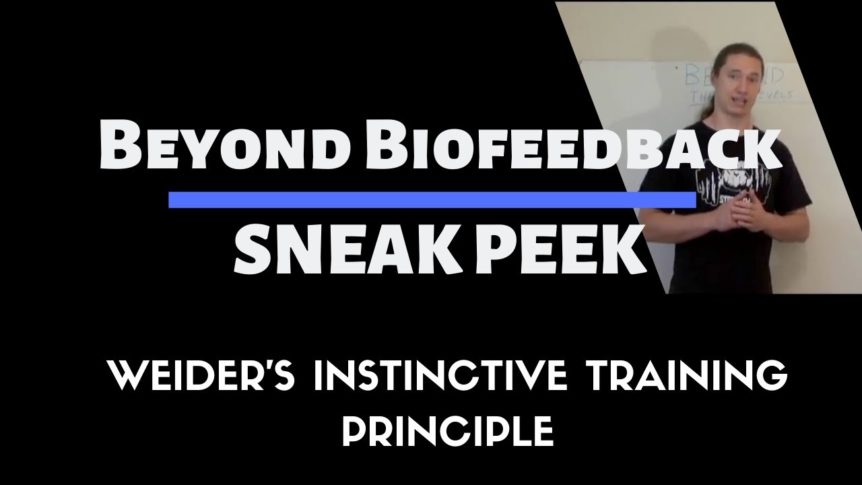The following video, as well as a text excerpt, comes from Beyond Biofeedback: The 4 Levels of Intuitive Training.
Famed bodybuilder Joe Weider talking about his Instinctive Training Principle.
What is intuition? And how do you actually go about building this? There are a few ways we can look at this.
In the next video we get to what the four levels of intuitive training:
- Beginner
- Testing
- Feeling
- Knowing
The following video talks specifically about how to bridge the gap between level two and level three. In it I discuss the feeling of the exercises themselves that become your guide.
The following video shows a short segment in the gym, working with dumbbell rows along with Level 2 – Testing in action.
In addition to the roughly two hours of video in the course is the written book. Here’s a little from inside there.
The Benefits of Biofeedback Training
Why should someone use biofeedback training? There are some lofty promises that come with it.
One is that you will achieve faster progress. Everyone that is involved in training wants this.
They either want to change the look of their body faster or they want to be able to hit their strength or other movement goals. Biofeedback training points you in the direction of the exercises you should be doing to hit your goals faster and easier.
It also promises that you’ll get no injuries in the gym, or at least dramatically reduce the chance of injuries. By only doing movements that are good for your body at a given time, you’ll never hurt yourself. If you’ve ever hurt yourself in the gym before, you may think that it happened out of nowhere. However, if you were tuned into the signals your body was giving you, then you’d know you need to stop far before that happens.
This isn’t foolproof, but there is a huge difference. Later, I’ll address the few injuries I have had, and what occurred for me not to pay attention to the signals that were there.
If you do an exercise that tests or feels poorly for you, you’re not necessarily going to get injured. But the likelihood of that is much higher than with something that happens to tests well for you. This is also not to say that you can’t make progress doing exercises that your body doesn’t want to do. You can. But you will have to work harder for it, and it will come at a higher cost.
Thus, another bonus of biofeedback training is that you can work much easier. You don’t have to work nearly as hard as many people say you do in order to hit your goals. Some people are a bit masochistic, they enjoy the pain of training and that can be fun for some time. There is something to be said for mental toughness and it has its proper time and place. But that time and place is not every single workout. To do so is a good recipe for burnout and injury!
You don’t have to force the body to adapt. While force is one trigger, there are others, like volume. A simple example is sitting, which industrialized people do too often. No force is used.
You’re not tapping into your mental toughness in order to sit down. But your body adapts to it, shortening the hip flexors and hamstrings, among other things.
With physical training, overall you want to make things as easy as possible. If you work easier, that allows you to do more work, which in the end means more progress. Studies have shown gains came with weights that were small fractions of max intensity, even around 10-30%. Of course, there is a point of diminishing returns if you go too easy.
You still do have to put in the work, you still do end up sweating, but it is much easier on the body. It might surprise you how little effort I put into training. There are times when I go hard, but that isn’t often. Most of my training is progressing while staying pretty laid back. You don’t have to train to failure, you don’t have to train beyond failure. In fact, if you go to failure you’re going too hard. This is what the elements of effort are all about, which we’ll cover shortly.
But biofeedback training is not a holy grail. You still need to understand the other master keys of training, like how progressive training works, the basic movement patterns of the body, exercise selection and variation, etc.
Also, the testing can be misused. You can do the tests wrong. You can influence the test results even without trying to. You can also let your ego get in the way and override the tests or the feelings. If you do any of these, you will not get the best results. We’ll talk about all that and how to make sure that you’re doing the testing in all the levels correctly and how to not have any of these problems.
When you start out, the testing may take a little time, but soon it becomes quick and easy. Of course, at the upper levels beyond the testing you’re going to save time because you’re not going to have to do the physical testing, or not have to do as much of the testing.
Another side benefit is that this builds better body awareness, and with that comes better body control. Once you get to levels three and four, you’re going to be much more aware of your body, and this is going to help not just in training; the intuition spreads into other areas of your life.
Want more? Then check out the full course, Beyond Biofeedback: The 4 Levels of Intuitive Training.


